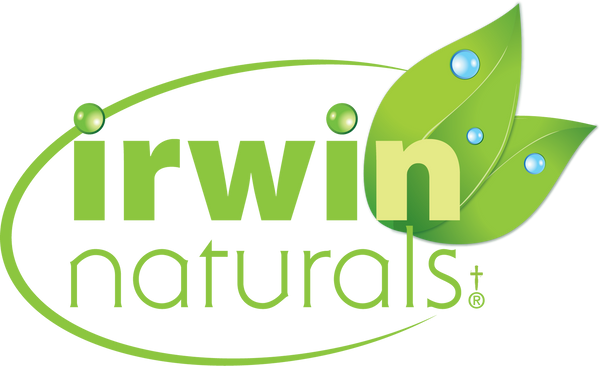written by: Dr. Elijah McCarthy, ND | June 20, 2018
A man walks into the doctor’s office and the doctor says,
"I’ve not seen you for a while!”
The man replies, "Yeah, I’ve been sick.”
Male Health Month…is not an oxymoron
In general, men in America are significantly less likely to visit the doctor. According to the Centers for Disease Control (CDC), the overall rate of doctor visits by women is more than 50% greater than the rate for men across most age groups.
This phenomenon would make sense if statistically there is a lower prevalence of disease in men and if men had a longer life-expectancy rate than women; however, the opposite is true.
Based on recent statistics, men can expect to die approximately 5-years younger than women and what is more, men experience higher rates of some of the more deadly health predicaments including cardiovascular disease, diabetes, and cancer.
So, why do men fail to seek medical attention when they obviously need it the most?
As a medical professional, I’m happy to report that I do see men in my exam room. However, for the most part when a man walks into my clinic, it is most likely due to one of the following: 1) their partner is "nagging” them to go see me, and/or 2) they are experiencing embarrassing symptoms related to the most prized member of their male anatomy.
High on the list of health issues that force men into the doctor’s office is the prostate gland.
Men and their prostate—it’s a complicated relationship
Prostate related urinary symptoms are largely age-related and are experienced by more than 50% of men between the ages of 50-60 years, and upwards of 90% in men 80 and above. For the majority of a man’s life the prostate goes unnoticed, that is, until it begins to contribute to frustrating discomfort that most men simply cannot ignore.
The Aging Prostate Gland 101
The prostate is a walnut sized gland that sits near the pelvic floor of men and is responsible for producing fluids that contribute to semen and the viability of sperm. The urethra (i.e. the tube that connects the urinary bladder to the exterior world), runs through the prostate gland, and as such intimately connects the health of the prostate to the health of the male urinary tract.
In response to a variety of biochemical signals including hormonal influences, prostate inflammation, and oxidative stress, prostate tissues grows as a man ages. As the prostate enlarges it squeezes the urethra, contributing to impedance of urinary flow, and other urinary symptoms that plague aging men.
These symptoms generate a significant amount of discomfort and frustration for men and can impact their quality of life considerably. Fortunately, prostate related urinary symptoms do not have to be the destiny of all men. Targeted prostate nutrition and healthy lifestyle practices can have a considerable impact on how the prostate evolves as the male body matures.
What forms of nutrition help promote prostate health? Let’s review some of the top-shelf items to consider:
Zinc is an essential trace element that is involved in regulating many enzymes throughout the body, and is found in high quantities in the prostate gland where it is concentrated at levels 10 to 15 times that of other tissues. Zinc helps to support immune function which is important in prostate and urinary tract maintenance.*
Beta Sitosterols, Pygeum Bark Extract and Pumpkin Seed Oil contain natural fatty acids and plant sterols which confer valuable nutritional support to the prostate gland and have been traditionally used to support urinary flow in aging men.*
Saw Palmetto benefits from extensive research and a long history of traditional use demonstrating its ability to promote urinary tract and prostate health.* Research has illustrated Saw Palmetto’s various influences on male hormones and their cell receptors in prostate tissue.* Nutritional benefits appear to lie primarily in Saw Palmetto’s ability to inhibit the conversion of testosterone into DHT, which is a hormone that contributes to the growth of prostate tissue and male-pattern baldness. *
Stinging Nettle Root Extract is a powerful prostate ally that has traditionally been used to support urinary tract health, but more specifically, research shows that it can help promote a healthy urinary flow rate.*
Now, I know what you are thinking, how are you going to track down all of these ingredients and remember to take all of them each day? Fortunately for you, Irwin Naturals is here to help. We have developed robust formulations that target prostate health and combine many of the ingredients listed above into targeted formulas.
Tap Into Irwin Naturals Prostate Health Resources
Like all of our formulations, we’ve made it easy for you to identify them with the following names: Prosta-Strong®, Prosta-Strong RED™, and Healthy Flow Saw Palmetto™. Each of these robust formulations has a unique focus in prostate health promotion. *
Prosta-Strong® is our all-around prostate health formula featuring an impressive list of prostate specific antioxidant ingredients such as Flower Pollen extract, Pygeum Bark Extract, Green Tea Extract, and Tomato extract. *
Prosta-Strong RED™ features Nitric Oxide support including L-Citrulline, and Ginkgo Biloba for improved blood flow while Healthy Flow Saw Palmetto™ features ingredients that help to support urinary flow including Stinging Nettles Root extract and Saw Palmetto. *
Although these dynamic formulations can help support your prostate health, they are no substitute for regular visits to the doctor. Male health screening guidelines should be followed and prioritized as early detection of any health imbalance is key to living a long and comfortable life. Prostate health screening exams can begin as early as 40 for high risk individuals, and should be a regular part of your preventative health routine by the age of 50 for all men.
Now, to all the men reading this, go make an appointment with your doctor and start taking control of your health today. Your loved ones will thank you.
*These statements have not been evaluated by the Food and Drug Administration. This product is not intended to diagnose, treat, cure, or prevent any disease.

